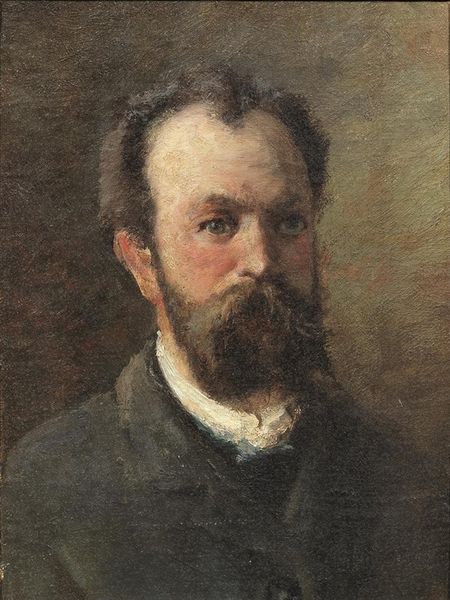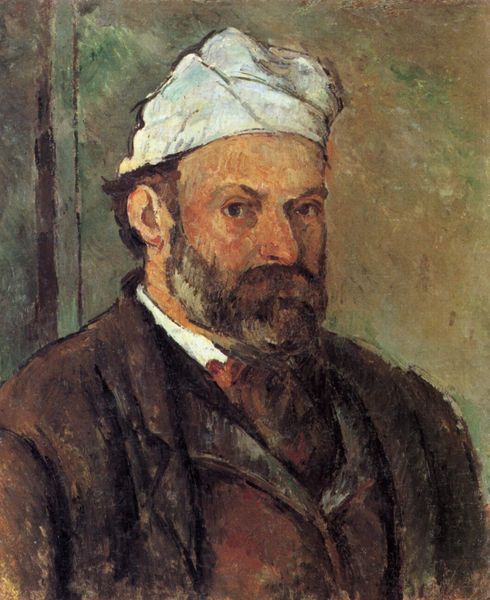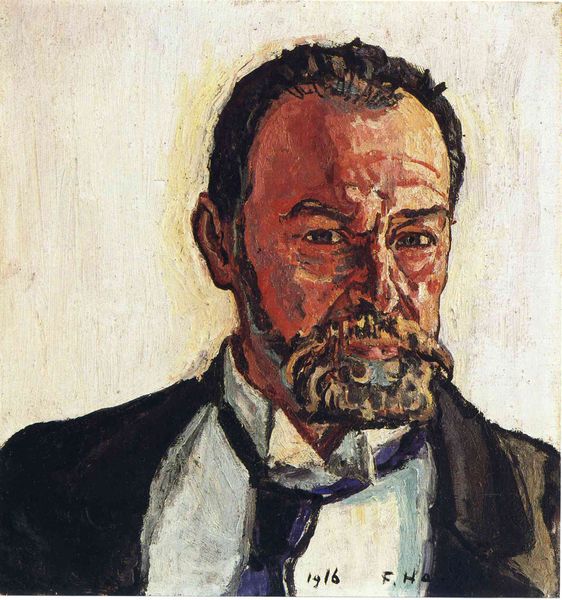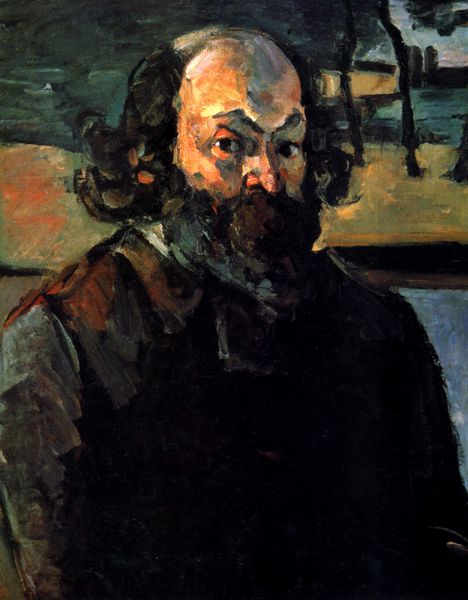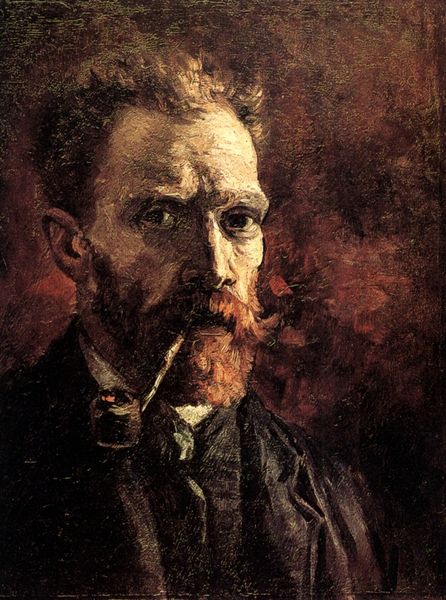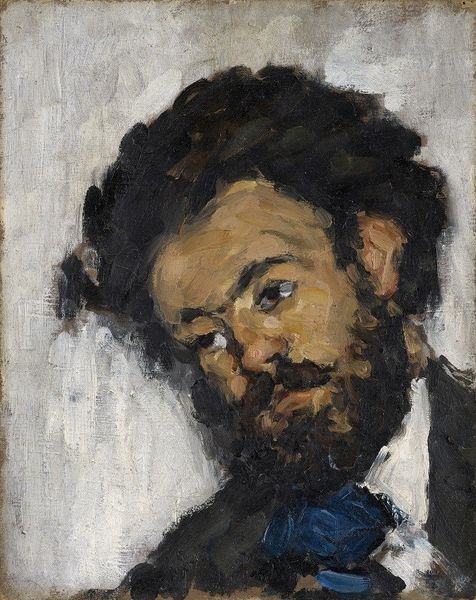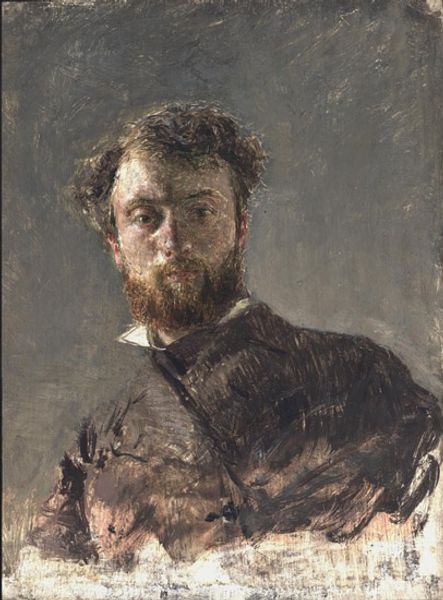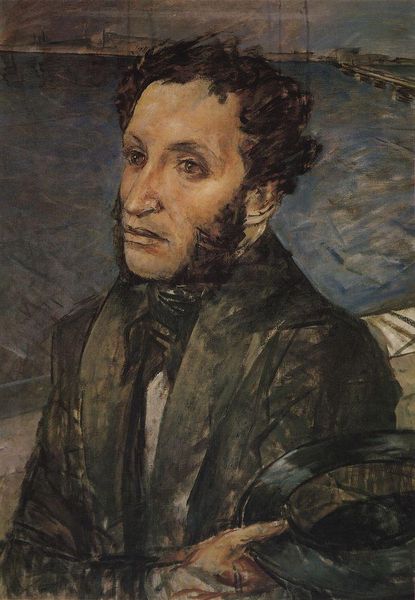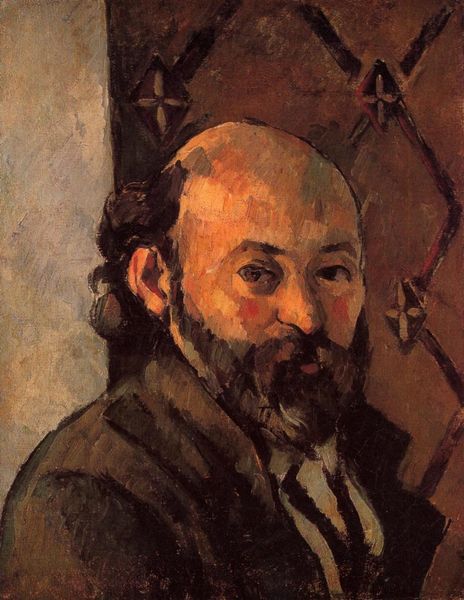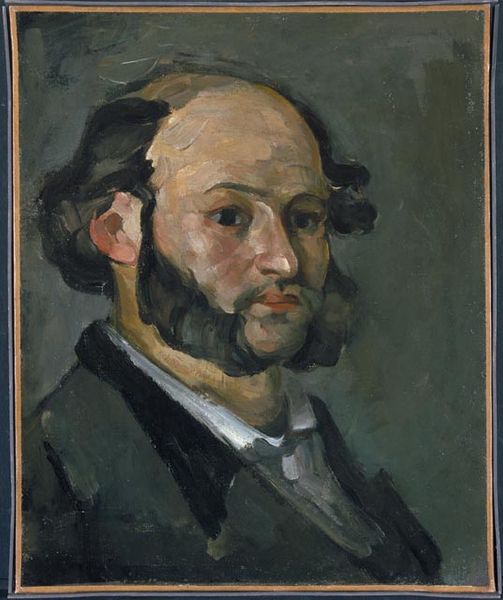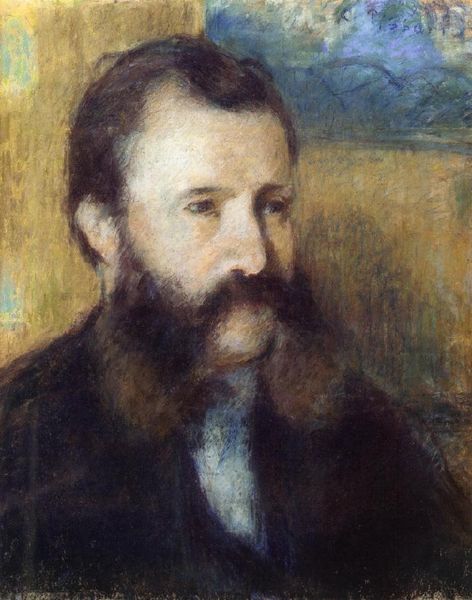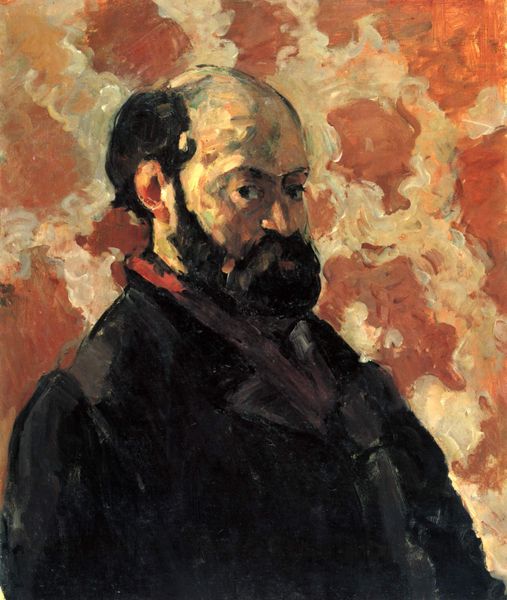
Dimensions: 60.4 x 50.2 cm
Copyright: Public domain
Editor: This is Paul Cézanne’s “Portrait of Anthony Valabrègue,” painted around 1870, using oil on canvas. I’m immediately drawn to its somber mood. The dark palette and the sitter's downward gaze create this sense of melancholy. What do you see in this piece? Curator: I see a powerful engagement with the symbol of the 'artist' within late 19th-century French society. Valabrègue, himself a writer and art critic, is depicted not as an individual but as a type. Look at how Cézanne uses the beard and formal attire—elements associated with intellectualism and bourgeois respectability—to create a visual shorthand for ‘the artist.’ How do these signifiers influence your reading? Editor: I hadn't considered the sitter as representing a broader concept. The formal attire seemed simply like a reflection of the period's dress. Now that you mention it, the deliberate, almost theatrical pose adds to that sense of representation rather than pure portraiture. Curator: Precisely. Think about the implications. The darkness surrounding Valabrègue isn't just aesthetic; it's symbolic of the struggles and introspection often projected onto the artist figure during this era. It touches on societal expectations, artistic isolation, and the artist’s complex relationship with the public. Do you see other visual clues that might contribute to this interpretation? Editor: Maybe the slightly unfocused gaze? It could symbolize a disconnection from the immediate world, suggesting he’s lost in thought, grappling with ideas…it gives the portrait another layer of depth, one I hadn't picked up on at first glance. Curator: Indeed. The entire composition acts as a visual encoding of the artist’s perceived role. It's a portrait, yes, but also a meditation on cultural identity and artistic purpose. Editor: This makes me appreciate Cézanne's intention in moving past surface level depiction. I realize how much these cultural markers impact how we view both art and the artists themselves! Curator: Exactly, by exploring those symbols we can dive deeply into a period, to gain access and learn the narrative from different eras and traditions.
Comments
No comments
Be the first to comment and join the conversation on the ultimate creative platform.

